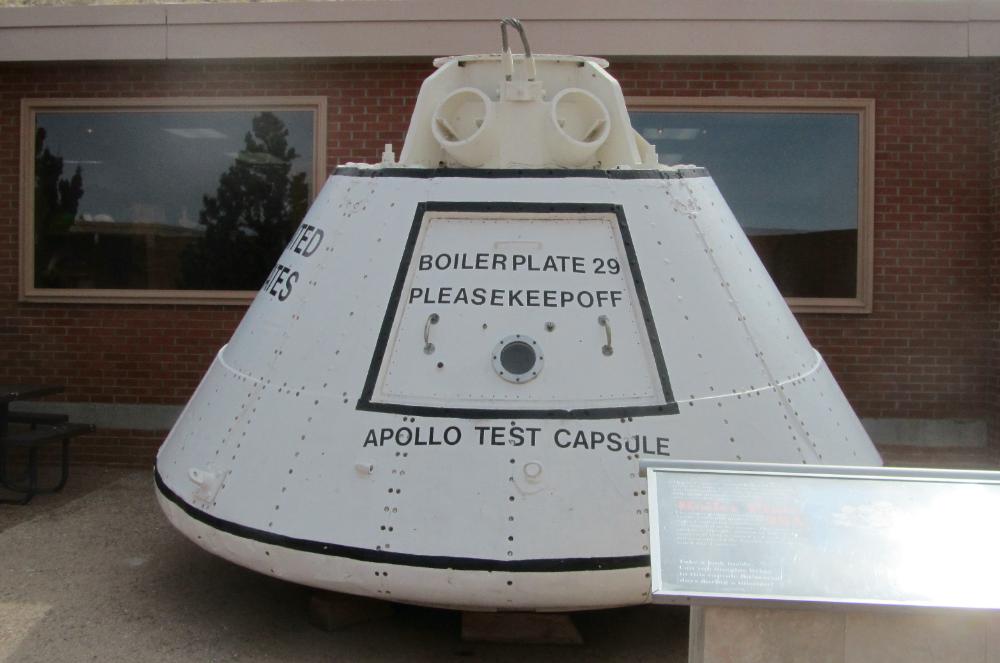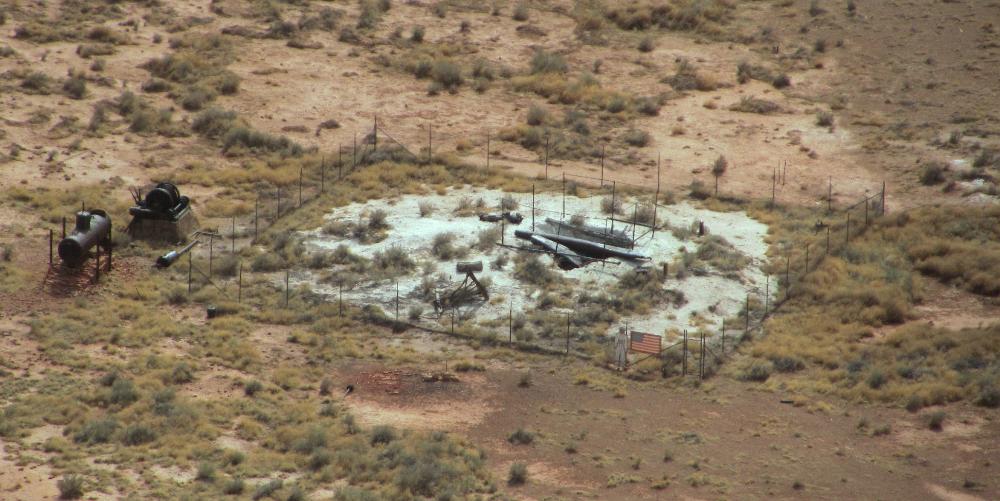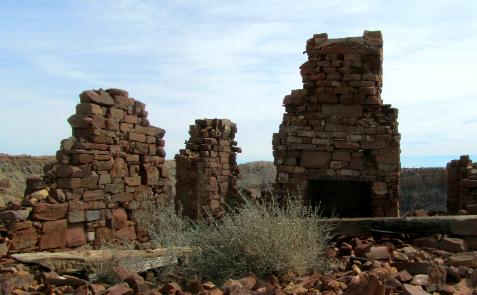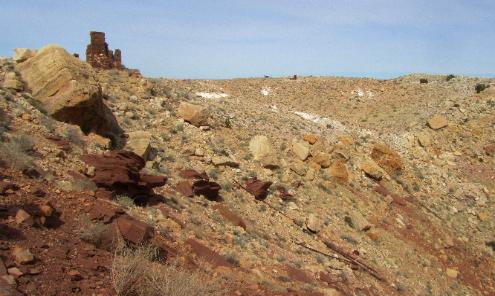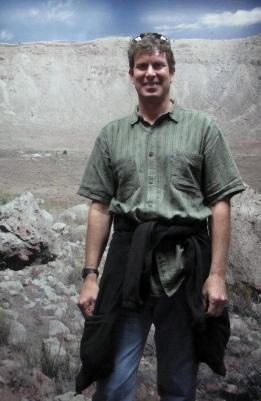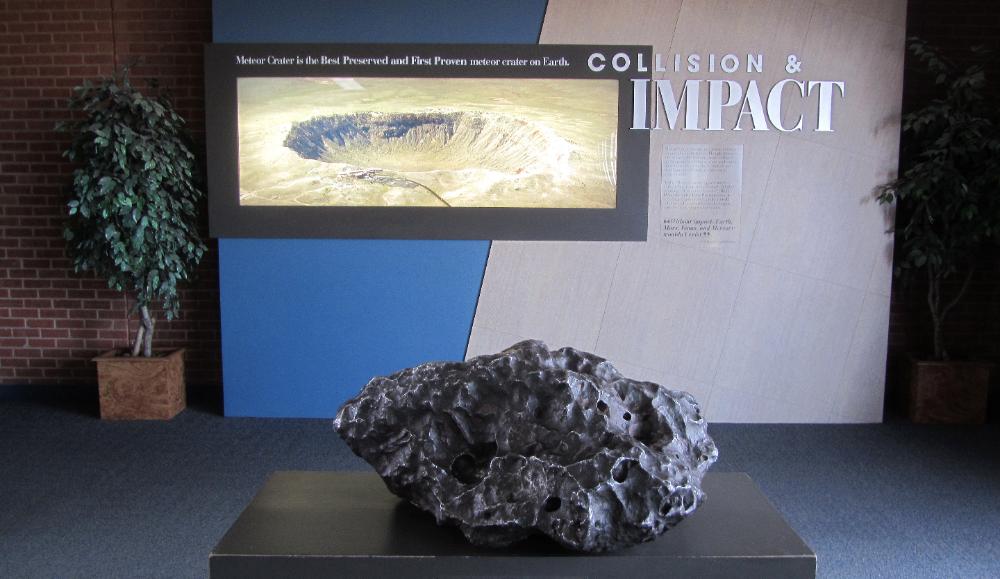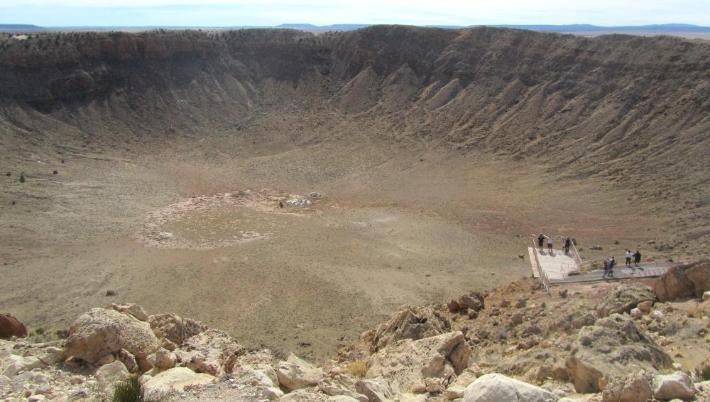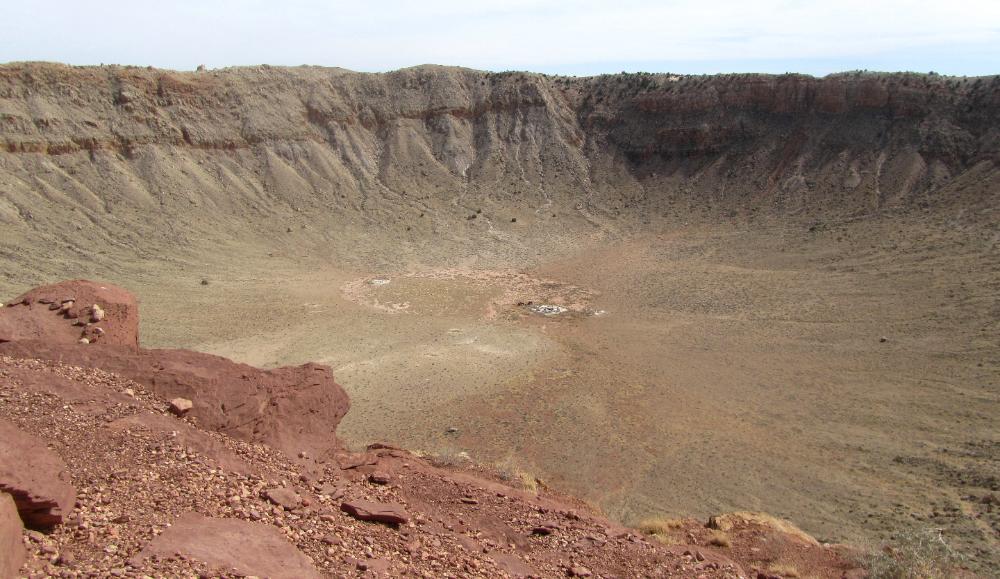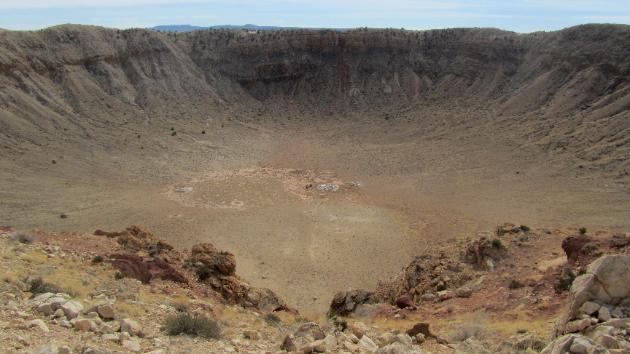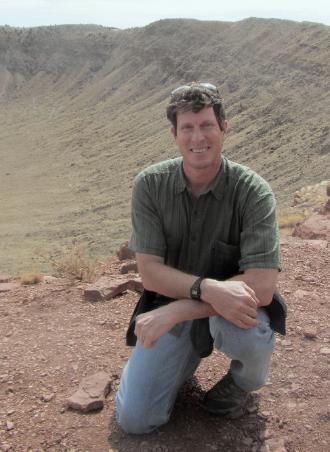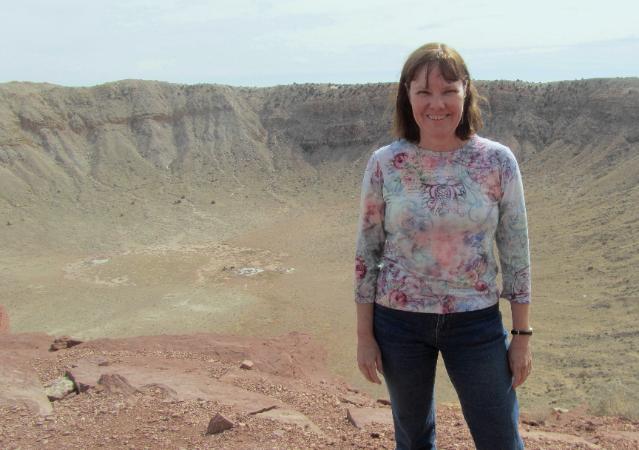
Where We Be
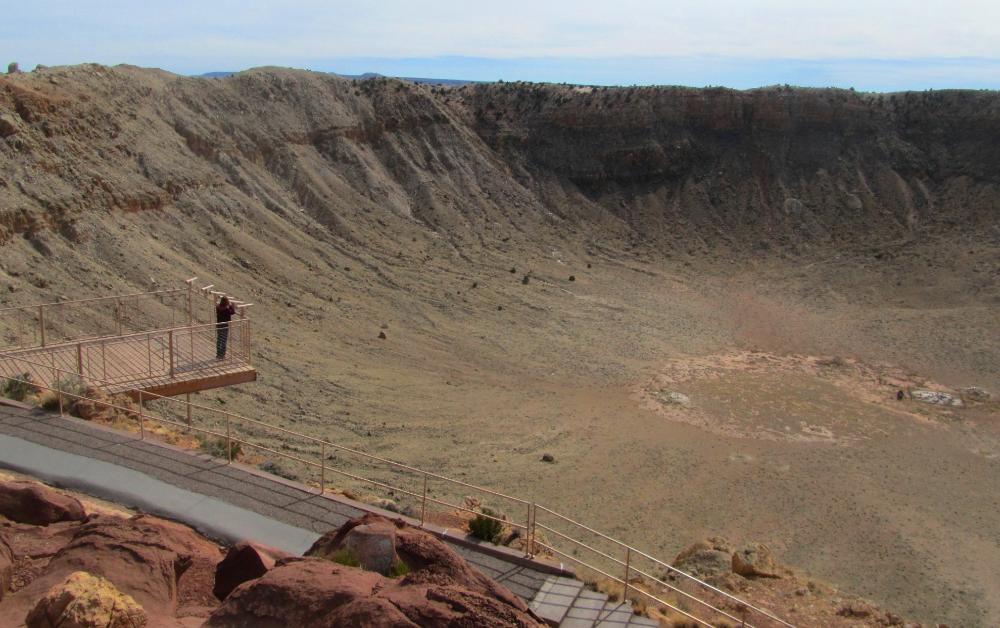
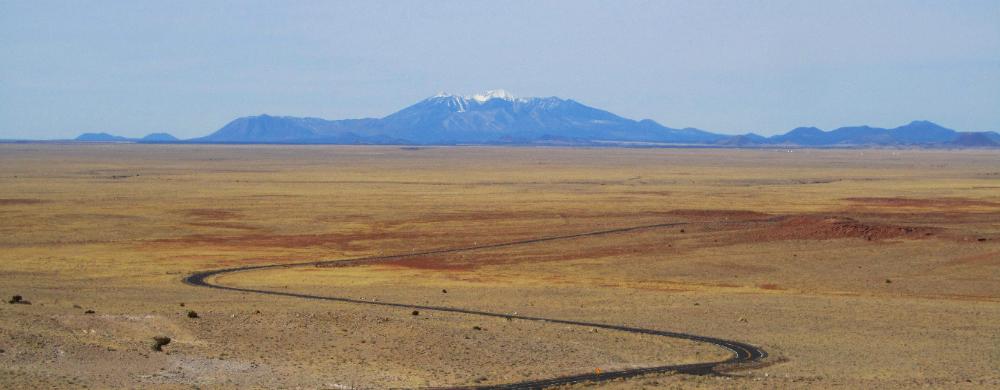
| Ground zero 50,000 years ago: Barringer Meteor Crater |
| Barringer Meteor Crater, Arizona |
| Robin stands on an observation deck looking into the crater through a series of fixed telescopes highlighting different features |
| View of the crater from the highest observation deck. Interestingly enough, the site is still privately owned by the Barringer family. They offered it to the U.S. Government at one point but the response they got was, “We’ve already got one big hole in Arizona – the Grand Canyon – why would we want another?” |
| We paid our $16 admission each and joined a guided tour of the crater rim. Here we're looking back at the visitor center. |
| Our guide explained how early geologists thought this was the caldera of an ancient volcano -- a reasonable assumption since there was no meteorite to be found. Half a century later, Eugene Shoemaker proved this was the site of a meteor impact based on flipped layers of strata and melted metallic spherules at the site. |
| It’s always fun to see the real thing after seeing it on TV so many years ago |
| This is the high desert landscape surrounding Meteor Crater. The site lies 43 miles east of Flagstaff (at the base of the snow-capped mountain). |
| For years the crater served as a training site for Apollo astronauts because the terrain so closely resembles that of the moon. Thus the Apollo test capsule on display at the entrance -- and the six-foot-tall statue of an astronaut at the crater base. |
| The Holsinger Meteorite is the largest discovered fragment of the 150-foot meteor that created Meteor Crater. Holsinger broke off from the main meteor as it entered the atmosphere and came crashing down about two miles away. We got to touch the heavy, pitted iron-nickel meteorite. |
| The visitor center includes a "fake backdrop" so you can pose for photos supposedly taken on the crater floor |
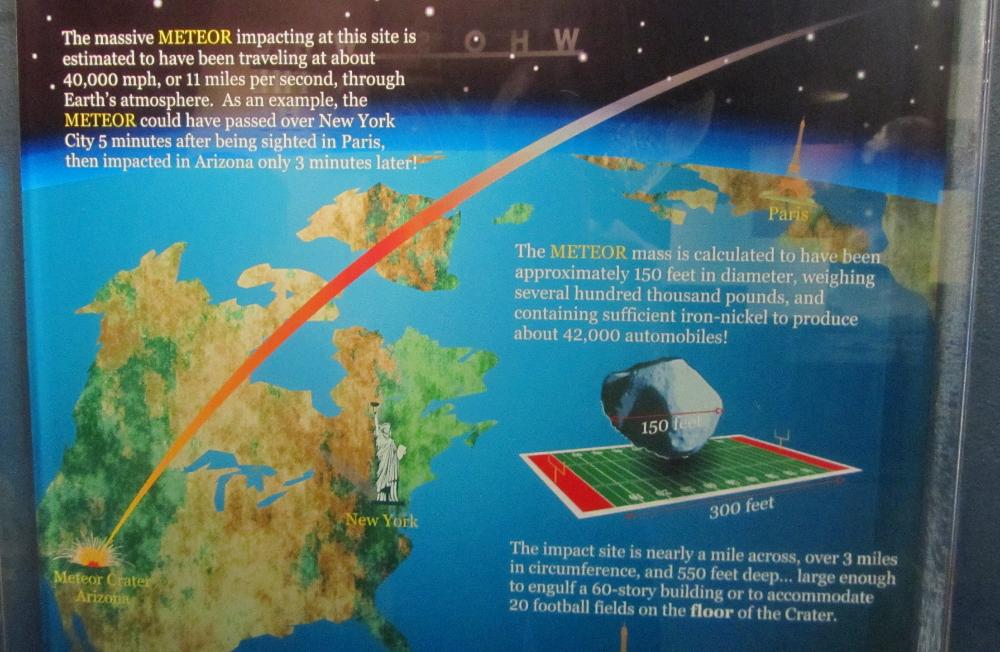
| The visitor center offers some interesting plaques and interactive exhibits |
| Ruins of the house Daniel Barringer lived in during his 26 years at the site. Barringer was a Philadelphia mining engineer who bought the land in 1903 hoping to mine it for the iron-rich meteorite he was convinced lay at its bottom. Unfortunately for him the meteorite evaporated upon impact! But he remained convinced the site was the result of an impact crater, and eventually he was proven right. |
| Our camera's zoom enabled us to see the mine shaft drilled by Daniel Barringer at the very center of the crater, as well as a six-foot-tall statue of an astronaut with an American flag. With the naked eye we couldn't even see the astronaut -- that’s how deep the crater is. |
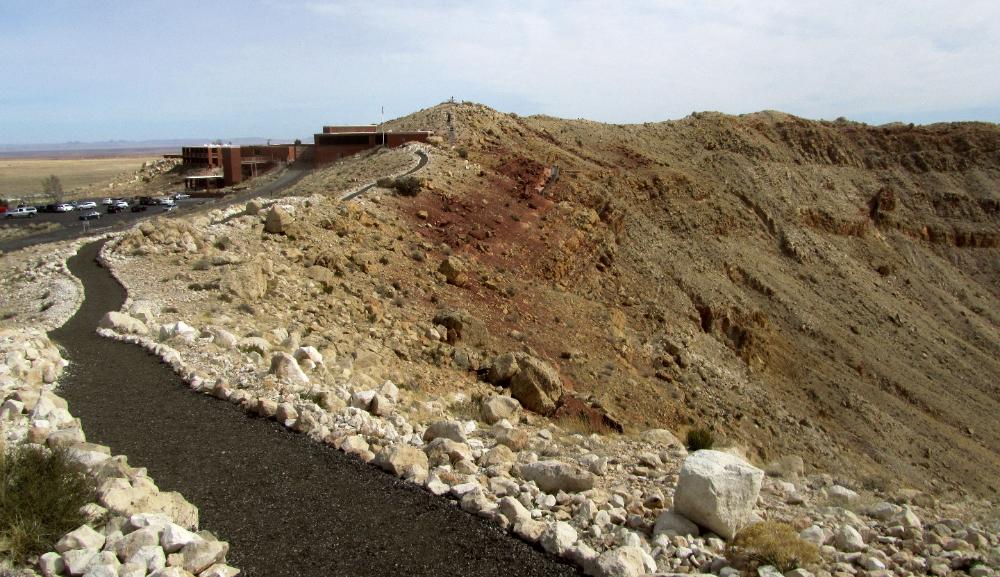
Ever since watching a documentary about
meteor impacts on Earth, we've wanted to see
Barringer Meteor Crater, which is located in
Arizona between Flagstaff and Winslow. Today
was our chance as our route happened to take
us right by the site. We were surprised at how
accessible it was -- just six miles south of I-40.
The Meteor Crater is the best preserved and
first proven meteorite impact site on Earth. The
meteor came crashing into the high Arizona
desert some 50,000 years ago, leaving a crater
a mile across and 550 feet deep. The exhibits at
the visitor center explain how the meteor was
traveling at 40,000 mph – 11 miles per second! –
when it smashed into the surface. Within ten
seconds it threw millions of tons of rock all
over the surrounding area. A shock wave of
hurricane force winds shot out in every
direction, causing destruction for miles.
meteor impacts on Earth, we've wanted to see
Barringer Meteor Crater, which is located in
Arizona between Flagstaff and Winslow. Today
was our chance as our route happened to take
us right by the site. We were surprised at how
accessible it was -- just six miles south of I-40.
The Meteor Crater is the best preserved and
first proven meteorite impact site on Earth. The
meteor came crashing into the high Arizona
desert some 50,000 years ago, leaving a crater
a mile across and 550 feet deep. The exhibits at
the visitor center explain how the meteor was
traveling at 40,000 mph – 11 miles per second! –
when it smashed into the surface. Within ten
seconds it threw millions of tons of rock all
over the surrounding area. A shock wave of
hurricane force winds shot out in every
direction, causing destruction for miles.
